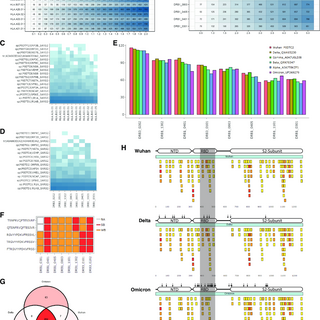
Luis F. Soto-Ugaldi
@LFSoto12
Followers
173
Following
3K
Media
14
Statuses
195
Bach. Genetics and Biotechnology Ph.D. student in Computational Biology at Fuchs Lab and Pe'er Lab RU/MSKCC
Joined October 2019
Exited to share our recent review on viral elements and their role in sensing cellular and environmental cues!!! Great work by @TheRealJRott @TommyTaslim5 @LFSoto12 @camilam59287155 and @Lumartcues
Viral cis-regulatory elements as sensors of cellular states and environmental cues https://t.co/2LTkXwxxR4
1
9
46
The @fuxmanlab is so excited to share our preprint, “Paired yeast one-hybrid assays to detect DNA-binding cooperativity and antagonism across transcription factors.” We explore the extensive functional relationships between TFs that affect DNA targeting. https://t.co/uFHFu9LxWz
biorxiv.org
Cooperativity and antagonism between transcription factors (TFs) can drastically modify their binding to regulatory DNA elements. While mapping these relationships between TFs is important for...
2
9
31
Many thanks to Juan and David for helping me get this out. Check out the paper for more information https://t.co/ptxAK96qmt I am pleased to hear your feedback as I will constantly update this server. I hope this will be useful as a first step in analyzing predicted epitopes
journals.plos.org
Multiple immunoinformatic tools have been developed to predict T-cell epitopes from protein amino acid sequences for different major histocompatibility complex (MHC) alleles. These prediction tools...
0
0
4
Location analysis shows that the loss and gain of epitopes are mainly due to mutations in the RBD region. Mutations in other regions have a lower impact on neoepitopes.
1
0
2
The analysis of Spike variants showed a high proportion of conserved epitopes with some gained and lost epitopes in each variant. Globally, there is no marked difference in the number of HLA-II epitopes per allele.
1
0
2
As expected, the largest protein contained more epitopes (R1/R1AB). In addition to Spike, Nucleocapsid showed the greatest number of HLA-I and HLA-II epitopes per allele.
1
0
1
We found that HLA-B*27:05 and HLA-B*07:02 are the alleles recognizing the least number of HLA-I epitopes. Unlike HLA-I, all HLA-II alleles considered showed a similar number of epitopes independent of the cutoff.
1
0
2
To illustrate the use of Epitope-Evaluator, we i) evaluated the T-cell epitopes predicted from the SARS-CoV-2 proteome, ii) identified most antigenic SARS-CoV-2 proteins and regions, and iii) evaluated the density of epitopes across Spike protein from different variants.
1
0
2
Epitope-Conservation: Identification of epitopes that are present in multiple proteins. It can be useful to identify conserved epitopes across different pathogen strains or to study the impact of mutations on the number of epitopes.
1
0
1
Epitope-Promiscuity: Identification of the epitopes predicted to bind to most HLA alleles showing with different colors the strong binders and weak binders based on a selected cutoff. Useful to select the most promiscuous epitopes and design multi-epitope constructs.
1
0
3
Epitope-Viewer: Visual identification of protein regions enriched or depleted with epitopes. Useful to visualize how coding mutations impact the increase or decrease of neo-epitopes. It also can be used for strategies to deimmunize peptide-based drugs.
1
0
3
Epitope-Density: Determine the set of proteins containing a high number of predicted epitopes as a first step to finding potentially highly immunogenic proteins. It correlates the protein length vs the number of epitopes and also shows the number of epitopes per HLA allele.
1
0
4
Epitope-Intersection: Identification of epitopes recognized by many HLA alleles, which is relevant for immunological tests or vaccines. It also can be used to identify restricted epitopes recognized only by a selected set of HLA alleles.
1
0
3
Epitope-Distribution: Identification of HLA alleles recognizing the least (and greatest) number of epitopes independent of the % rank cutoff selected. It also can be used to select a proper cutoff based on the expected number of predicted epitopes.
1
0
3
Epitope-Evaluator contains 5 interactive tools: Epitope-Distribution, Epitope-Intersection, Epitope-Density, Epitope-Promiscuity, Epitope-Location, and Epitope-Conservation.
1
0
3
Together with @fuxmanlab and @davidr_requena , we developed Epitope-Evaluator ( https://t.co/mYeFsOIZE8), an interactive online program. It requires 1) a protein fasta file, and 2) the output prediction table of any predictor.
1
0
3
Epitope-Evaluator is out! If you are working with predicted epitopes for immunological tests or vaccine design, or simply want to try any of these tools to analyze predicted T-cell epitopes, this thread 🧵can help!
2
5
18
➡Two interesting tools, check them out! ➡ https://t.co/3Tt7OFGZf7 ➡ https://t.co/ODuolITfiU
#neuroscience #Bioinformatics #RStats #AcademicTwitter #postdoc #OpenAccess #bibliometrics #Biology #PhD #Journal #datascience #AI
2
104
369
When it’s Friday AND you got good news on a paper 🔉🎶
1
1
36
AlphaFold, ColabFold, ESMFold, OmegaFold? Well … allow me to introduce you to DALL-E-Fold. Unlike other recent methods that use protein sequence to predict structure, DALL-E-fold is able to predict a structure* of a protein with just a name and a dream! *results may vary
8
52
374























